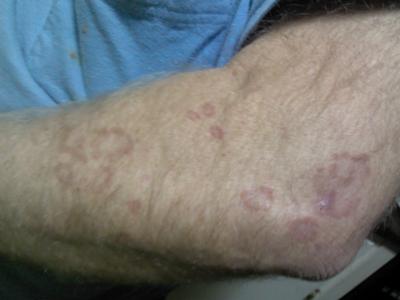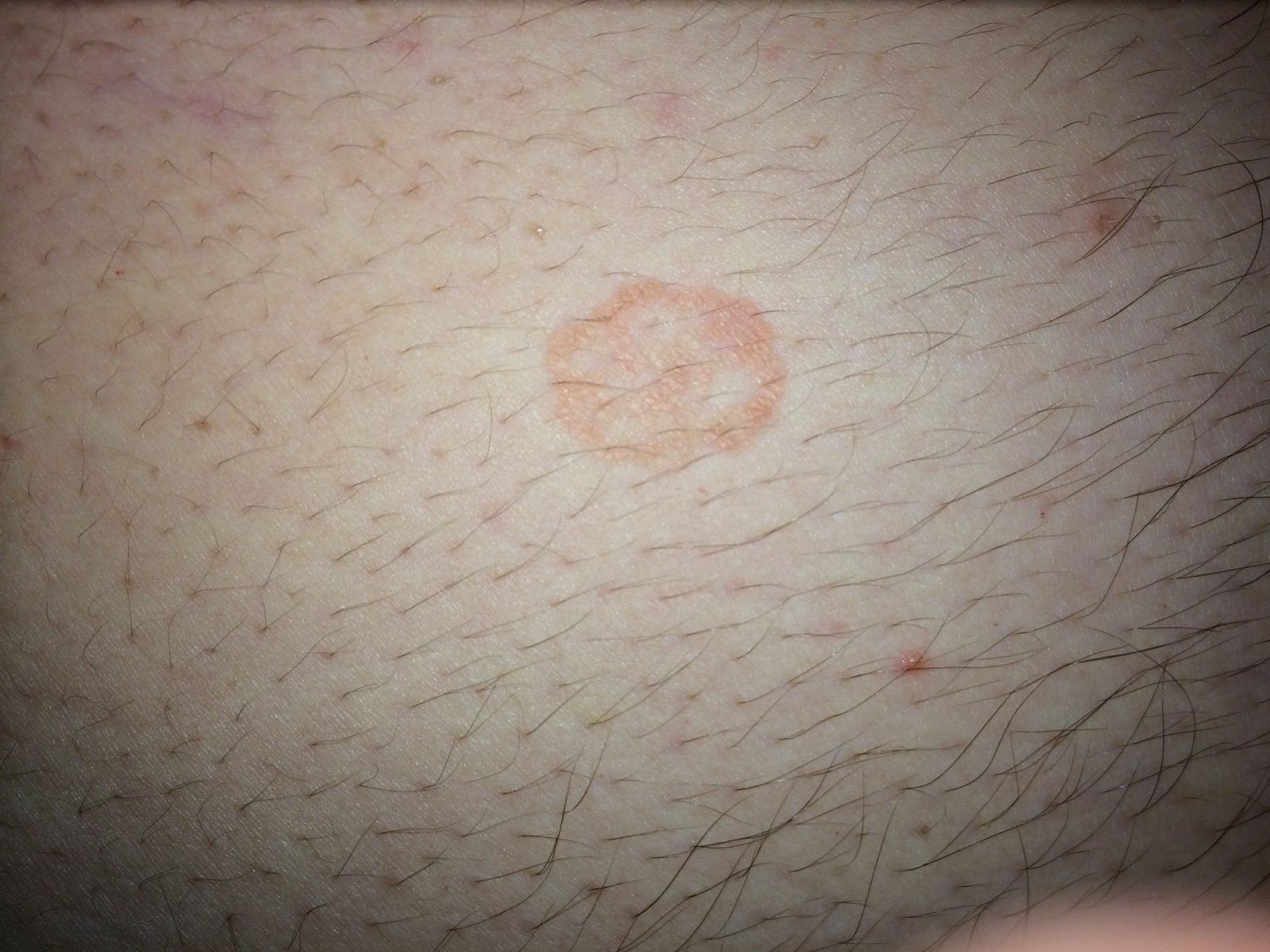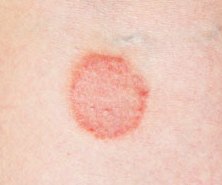Circular Skin Rash Biography
Source(google.com.pk)
Here are some circular skin rashes:
Granuloma annulare: is a self-limiting inflammatory skin lesion occurring in both adults and children.These lesions are often seen on the hands, arms, and ankles. Granuloma annulare is characterized by rings of closely set, small, smooth, firm papules, usually skin colored, but they also may be slightly erythematous or have a purplish hue. Lesions vary in size from 1 cm to 5 cm. They are generally asymptomatic and nonpruritic.
Impetigo is a common and highly contagious pediatric skin infection. Intact skin is an effective barrier that decreases the risk of infection. When the child scratches a lesion, bacteria are introduced, causing inflammation and infection. This infection is most commonly seen in children aged 2 to 5 years but can occur at any age. Impetigo may be bullous or nonbullous and is usually caused by Staphylococcus aureus or Group A beta-hemolytic streptococci (GABHS) organisms.Although it was once thought that the organism causing impetigo could be predicted based on its bullous or nonbullous honey-colored crusted appearance, there is some evidence indicating that lesions may be affected by (or associated with) both S. aureus and GABHS.The bullous form of impetigo presents as a large, thin-walled bulla (2 to 5 cm) containing serous yellow fluid. It often ruptures, leaving a complete or partially denuded area with a ring or arc of remaining bulla.
Dermatophyte (tinea) infections are the most common recurrent and persistent fungal infections of the hair, skin, and nails in children of all ages. In the United States three types of dermatophytes account for the majority of fungal infections: Trichophyton, Epidermophyton, and Microsporum. Tinea corporis can be caused by any of these dermatophytes.The source of transmission is direct contact with humans, animals, or fomites infected with the organism. Greater than 90% of tinea capitis infections are caused by Trichophyton tonsurans.On physical exam, tinea corporis presents as a circular or oval erythematous scaling lesion, hence the term ringworm. The circular area has a pale center with mildly erythemic raised borders due to inflammation. The interior is dry, scaly and may be pruritic. The affected area may closely resemble other dermatologic conditions that can manifest as round patches or plaques such as pityriasis rosea, nummular eczema, granuloma annulare, psoriasis, tinea versicolor, and annular contact dermatitis.
Children exposed to the dermatophytes may be at increased risk of infection if they are immunocompromised, have areas of skin trauma, or remain in moist and/or occlusive clothing. Once the organism has invaded the stratum corneum, the central clearing of the infected site will occur in a few weeks, resulting in the pathognomonic appearance.
Tinea Capitis:T. tonsurans (the most common cause of tinea capitis) and M. canis account for the majority of tinea capitis infections in the United States and Europe (Chan & Friedlander, 2004). T. tonsurans is associated with human-to-human contact and with fomites such as combs, hats, seatbacks, and telephones. An endothrix, T. tonsurans' growth and spore formation is largely confined to the hair shaft, where the spores increase hair follicle fragility.In non-inflammatory tinea capitis, the hair breaks off just above the level of the scalp. The black tips of the hair follicles remain, causing the typical black-dot appearance. Another common presentation resembles seborrheic dermatitis; the scalp appears scaly rather than black-dot. This inflammatory type of tinea capitis is characterized by pustules, papules, and crustiness of the scalp. Cats and dogs are natural reservoirs of M. canis fungal infections of the commonly inflammatory type. Infected cats contaminate the environment with microsporum through airborne arthrospores. Dogs are more likely than cats to contaminate surfaces and are less likely to cause infections in humans.










wish you would have actually labeled the pictures so that we could actually tell what each one is. this site is basically no help to me since the pictures were not labeled by their individual rash.
ReplyDeleteAgree!
Deleteyes, quite rubbish
ReplyDeletedumbasses how are we supposed to know what is what
ReplyDelete